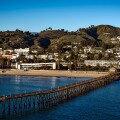Downey, California; Big History in Suburban Los Angeles
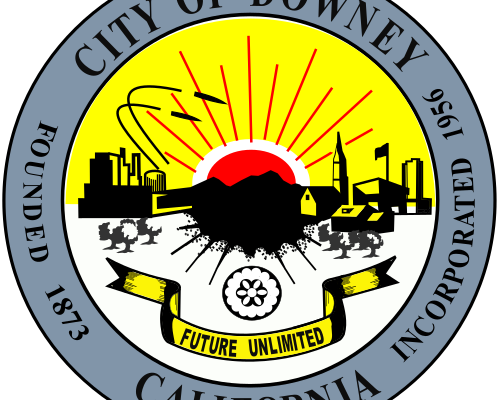
Things to do in Downey, California
Los Angeles, California is home to some of the most interesting suburbs in the country, all of which are bursting with diverse histories. Just a mere 13 miles southeast of Los Angeles is the city of Downey, California. Downey may seem like just another city you pass when you leave your Disneyland hotel to go star searching in Hollywood, but you’d be surprised of the rich history Downey has to offer.
Downey’s earliest settlers (even before the Spanish arrived in Alta, California) were a Tongva ethnic group. Upon arriving, the Spanish started referring to the Tongva ethnic group as Gabrielino. The Tongva communities were approximately north and northeast of present-day Downey.
On September 8, 1771, Mission San Gabriel Arcángel was founded near the Tongva groups in the Whittier Narrows, on a bluff overlooking the Rio Hondo, which was near the intersection of today’s San Gabriel Boulevard and Lincoln Avenue. Due to flooding, Mission San Gabriel was forced to relocate 15 miles north of Downey, an area that is now called San Gabriel, California. Along with the Spanish and Tongva groups, Ireland natives settled in Downey as well. Downey was founded by and named after an Ireland native, John Gately Downey. At one point, Gately was the youngest governor of California ( he was 34 at the start of his tenure). While in office, Governor Downey was certain that oranges would thrive in Southern California, so he decided to import different kinds of oranges. The oranges later became one of California’s biggest cash crops.
By 1935, Downey was known as an “orange-grove town.” Along with the abundance of oranges, farmers in the area were growing grain, corn, castor beans and fruit. Downey was incorporated in 1956 and instituted its government in 1964. After World War II, suburban homes and factories began to replace all of Downey’s farms. From the 1960s to 2016, the population of Downey grew from 82,505 to 113,267. And during the 1980s, Downey became home to many middle, upper-middle class and second and third generation Mexican-Americans. With 1.96% of Downey’s population being Cuban, Downey has the second highest percentage of Cubans and Cuban Americans in the Western United States. As of 2016, Downey’s population is also 2.5% Puerto Rican.
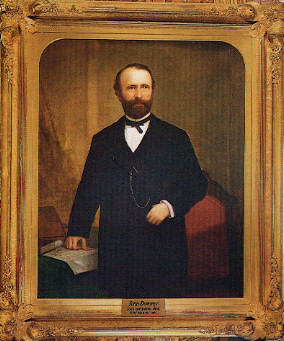
Governor John G. Downey Photo via Wikipedia
Aerospace
Due to World War II, industrialization and suburbanization grew fast in Southern California, including the city of Downey. Between 1940 and 1960, the population of Downey tripled, mostly due to the expansion of the Aerospace industry. In 1936, aviation pioneer Jerry Vultee purchased an airstrip in Downey, which was previously owned by E.M. Smith. Within the next few years, Smith turned the airstrip into his very own airplane assembly plant. The Vultee factory developed 13,000 planes in Downey during World War II and was “one of the nation’s largest producers of military aircraft.” The Vultee company also gained recognition for employing women in its factories.
Vultee Aircraft was eventually renamed North American Aviation, only to be renamed as North American Rockwell, which was later on bought by the aircraft company, Boeing. Vultee Aircraft in Downey was located on the eastern side of Lakewood Boulevard and extended near Imperial Highway to Firestone Boulevard. A good majority of U.S. space technology was developed at Vultee Aircraft in Downey between the 1950’s and 1990’s. Vultee Aircraft also shifted from developing aircrafts to working with missile technology in the 1950’s. “Over 25,000 employees worked in Downey on the Apollo Space Program.”
Vultee Aircraft employed thousands of people who worked as engineers, mechanics, and factory workers for over 40 years. Unfortunately, a major amount of layoffs took place in the 1980s and 1990s. By 1999, Vultee Aircraft had closed its doors. The large aircraft hangars eventually housed Downey Studios, where motion pictures were filmed, such as “Spider Man,” “The Italian Job,” and “Iron Man.” In 2012, Downey Studios had been demolished to make room for the new “Downey Promenade” shopping center.
“The Aerospace Legacy Foundation” was created in Downey and remains there today. “The Aerospace Legacy Foundation” continues to perform research and archiving, in order to keep the rich history of the aerospace legacy alive in Downey. Downey has been referred to by many historians and writers as the “Cradle of Cosmic Age.”
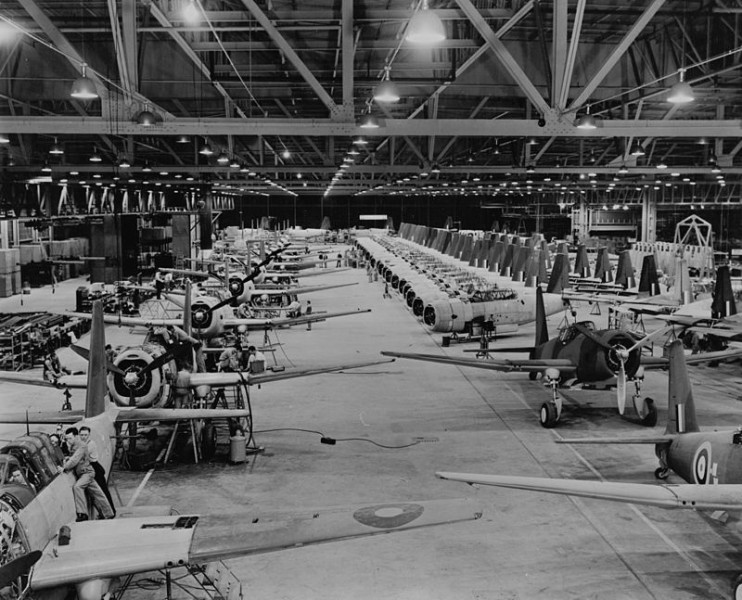
Workers in Downey building Vultee Vengeance bombers for the Royal Air Force in 1943. Photo via Wikipedia
The Columbia Memorial Space Center
“The Columbia Memorial Space Center is a 20,000 square foot interactive learning center” located in Downey. The Space Center officially opened in 2009 in celebration of the the Apollo Space Program, NASA and the Space Shuttle. The Space Center “includes two floors of exhibits and laboratories for local students to engage in science learning and technology.” Students have the opportunity to model their own aircraft and test it on an airplane launcher located within The Space Center. The Columbia Memorial Space Center also pays tribute to the astronauts who lost their lives in the 2003 Space Shuttle Columbia accident.
El Taco
In the 1950’s, former Los Angeles Rams pro football players, Charley Toogood and Harland Svare, collaborated with Phil Crosby (yes, Bing’s son), and Glen Bell of Taco Bell, in the creation of a new Mexican restaurant that they planned to open in Downey. With Glen Bell’s fast food experience and excellent judgment, the group’s adventitious partnership and the team’s unanimous affection towards Mexican food and Mexican culture, this led to the opening of a Mexican restaurant that would go down in Downey history and still be known as a great place to grab a mouthwatering burrito, even in 2018. This dream team of Mexican food lovers and restaurateurs successfully opened El Taco in 1958 on Firestone Boulevard in Downey, California.
Not only is El Taco an appetizing fast food joint, but it’s also one of the most popular hole-in-the-wall Mexican fast food restaurants in Los Angeles County. With 2 locations in Downey, 1 in Anaheim and another in San Pedro, El Taco has received high praise from Downey locals and native Southern Californians with their menu of simple Mexican food comforts such as their Bean & Cheese Burrito, Quesadilla with Red or Green sauce, Chicken Enchiladas and Cinnamon Crispies.
“El Taco serves as a historical reminder of SoCal’s Taco inheritance, established by a few passionate men that loved good food.” Management continues to stay loyal “to keep true of El Taco’s original vision of delivering delicious food with the freshest ingredients without compromising quality, ever. It is our joy to be able to continue serving our delicious food for generations of families to come.” El Taco is a must for those who can’t get enough Southern California-based Mexican food in their lives.
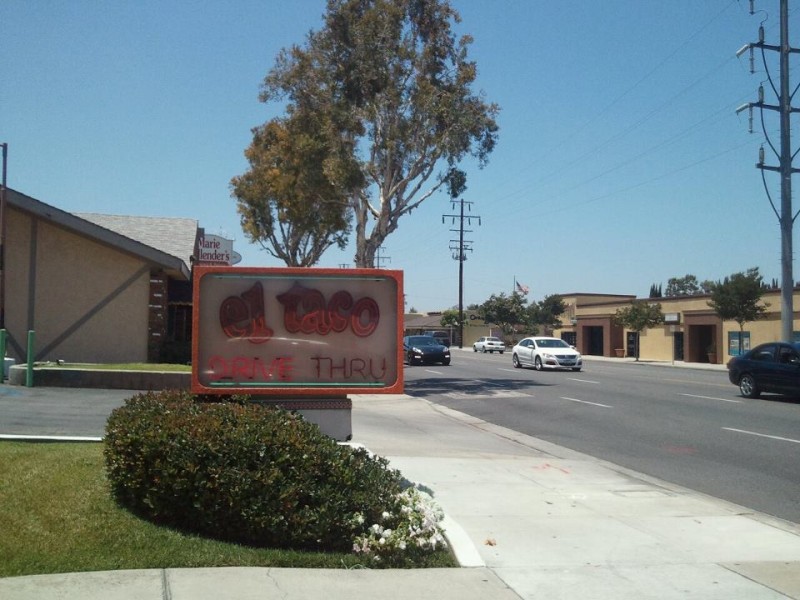
Photo via Brandon Speakman
Taco Bell No. 1
Along with El Taco, Glen Bell found minor success in other restaurant enterprises like Bell’s Burgers and Taco Tia. Bell had a tendency to sell his portion of each restaurant before the third anniversary came around, because he was always interested in new business ventures. Little did he know one of his business ventures would change his life forever.
In the 1960’s, Bell noticed “prosperity and growth” in the city of Downey, California. This prompted him to build a “Mexican-inspired center” that included different shops, live music, fire pits and a little taco stand called Taco Bell.
The first Taco Bell was a 400-square foot building that opened in 1962. The store was “no bigger than a two car garage.” At this Taco Bell, behind the small walk-up window that was framed with mission-style arches, Glen would be in the back going to work in creating five Mexican food staples that were sold for 19 cents at the time; tostadas, burritos, frijoles, chili burgers and tacos. Eventually, other shops and food stands joined Taco Bell at the plaza.
Bell had found success in his small taco stand. As his success grew, so did Taco Bell. By 1964, 8 other Taco Bell restaurants had popped up in Southern California. By 1976, there was a celebration held for Taco Bell No. 100.
Sadly, Taco Bell Numero Uno closed its doors in 1986, due to its lack of indoor seating and drive-thrus, which had become attractive qualities in other popular and larger restaurants. Between 1986 and 2014, other taquerias were moving into Taco Bell No. 1’s building, only to leave it in search for another location. In December 2014, the original Taco Bell building was vacated for good.
When plans developed for Taco Bell No. 1 to be demolished, protests were initiated and a campaign titled “Save Taco Bell Numero Uno” was started. As of 2015, Taco Bell Numero Uno had changed locations and was removed from Firestone Boulevard in Downey. This historic building was taken on a 45-mile road trip to Taco Bell’s headquarters in Irvine, California.
While Taco Bell No.1 is no longer at it’s original location on Firestone Boulevard in Downey, it is still located at Taco Bell Headquarters at 1 Bell Way in Irvine, California. “Taco Bell said it will leave the fate of the building up to the fans who could choose to turn it into a museum, a new franchise or something else entirely.”
McDonald’s No. 3
If you have seen the film “The Founder,” you will know that the original McDonald’s opened in San Bernardino, but has since closed down. While it is sad that Americans will never be able to eat at the the first ever McDonald’s, the oldest operating McDonald’s is still up and running in Downey.
The third McDonald’s opened on Lakewood Boulevard in Downey on August 18, 1953. This particular McDonald’s is the oldest McDonald’s restaurant to still be standing and Downey residents are proud to have the historic building in their city.
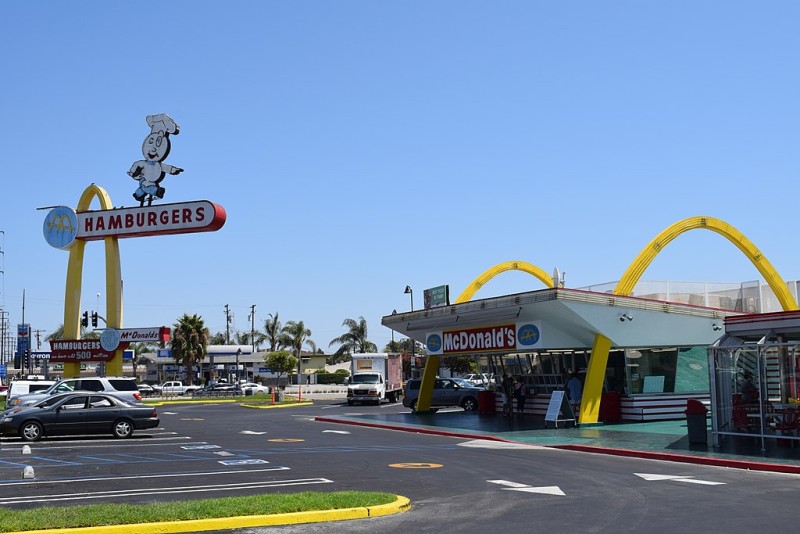
McDonald’s No. 3 in 2017. Photo via Wikipedia
The first restaurant to be opened by McDonald’s Brothers, Richard and Maurice, neighbored the Monrovia airport. The tiny octagonal shaped building opened in 1937 and was called “The Airdrome.” Eventually, “The Airdrome” was moved to 1398 North E Street in San Bernardino, California in 1940. Although “The Airdrome” started out as a barbecue drive-in, the McDonald’s Brothers found that most of their profits came from hamburgers.
In 1948, McDonald’s No. 1 was closed down for three months and was reopened as a walk-up hamburger stand that sold hamburgers, potato chips and orange juice. In 1949, french fries and Coca-Cola were added to the menu. Richard and Maurice found McDonald’s operating a lot smoother with the simplified menu. The brothers then starting using assembly line principles with their employees, which allowed them to sell hamburgers at 15 cents a burger, which was nearly half as much as sit down restaurants were charging. With McDonald’s being a major success, the brothers began to franchise the restaurant in 1953.
The first franchisee of McDonald’s was Occidental Petroleum executive Neil Fox. Fox opened his McDonald’s on North Central Avenue in Phoenix for a $1,000 fee and it became Arizona’s first ever McDonald’s. The McDonald’s in Phoenix was the first McDonald’s to showcase the Golden Arches, which was an idea constructed by the McDonald’s brothers. Richard and Maurice were surprised that Fox had been so enthusiastic about the “McDonald’s” name. They were even more surprised when all future franchisees used the name “McDonald’s” (except for a location in North Hollywood, CA that was called “Peaks). Little did they know, their last name would eventually become one of the most well-known names in America.
When Ray Kroc purchased the chain from the McDonald’s brothers, the Downey restaurant was not affected because it was franchised under an agreement with Richard and Maurice and not with Kroc’s company, McDonald’s Systems Inc., later known as McDonald’s Corporation. Because of the contract, McDonald’s No. 3 was not forced to comply with modernization requirements that other McDonald’s restaurants under the McDonald’s Corporation had to follow. McDonald’s No. 3 also had a different menu from other McDonald’s and did not carry certain items, such as the Big Mac.
Between the differences from McDonald’s No. 3 and all other McDonald’s owned by the McDonald’s Corporation and due to a McDonald’s opening less than a mile away from McDonald’s No. 3 in the mid 1970’s, the restaurant was not able to keep up and was eventually bought out by the McDonald’s Corporation in 1990.
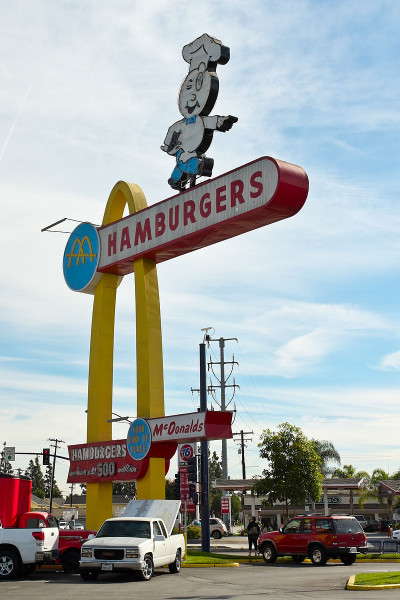
The sign outside McDonald’s No. 3 in 2014, featuring Speedee The Chef, McDoanld’s first mascot. Photo via Wikipedia
The restaurant eventually closed down due to low sales, damage from the 1994 Northridge earthquake and the lack of a drive-up window and indoor seating. While there were plans to demolish the historic McDonald’s and incorporate some if its features in a “retro” restaurant that was nearby, McDonald’s Corporation was unable to do so. The reason why the McDonald’s Corporation was unable to demolish their own restaurant was because McDonald’s No. 3 was listed on the National Trust for Historic Perseverance’s 1994 List of the 11 Most Endangered Historic Places. With the public and preservationists demanding McDonald’s No. 3 be saved, McDonald’s spent 2 years restoring the restaurant and reopened it. McDonald’s No. 3 is still up and running and guests can still visit it today, along with an adjoining gift shop and museum.
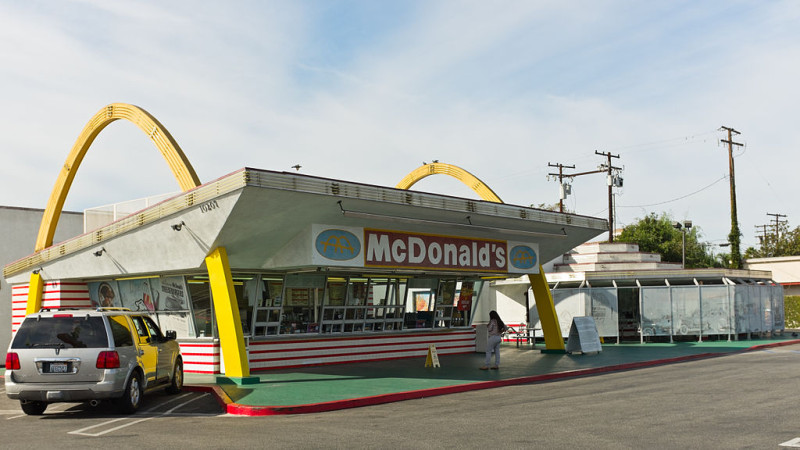
McDonald’s No. 3, with the gift shop/museum to the right. Photo via Wikipedia
Bob’s Big Boy Broiler
Formerly known as Harvey’s Broiler (1958-1968) and Johnie’s Broiler (1969-2001), Bob’s Big Boy Broiler opened in 1958. Bob’s Big Boy Broiler was a Googie-style coffee shop and drive-in restaurant, which was founded and named after owner Harvey Ortner, a previous partner of the Clock Broiler Restaurants in Southern California. Ortner and his wife, Minnie, purchased property, which was formerly a poultry farm, located on Firestone Boulevard and Old River School Road in 1950. Ortner and Minnie hired architect Paul B. Clayton to design Harvey’s Broiler. It was Clayton’s idea to add Southern California Googie architectural elements in the design of Harvey’s Broiler, as a way to get the attention of motorists traveling in either direction on Firestone Boulevard.
Fortunately for Ortner and Minnie, Harvey’s Broiler was an overnight success. The restaurant attracted thousands of people from all over the United States that wanted to experience the phenomenon of “The Broiler.” In 1968, Harvey’s Broiler was renamed Johnnie’s Broiler. As times changed, so did “The Broiler.” In 1970, Johnnie’s Broiler stopped offering drive-in curb service.
The “Fat Boy” mascot at Johnie’s Broiler was designed after Beany, from the cartoon Beany and Cecil. Jonhie’s Broiler in Downey became a sister store to Johnie’s Coffee Shop Wilshire (originally a Simon’s Drive-In site).
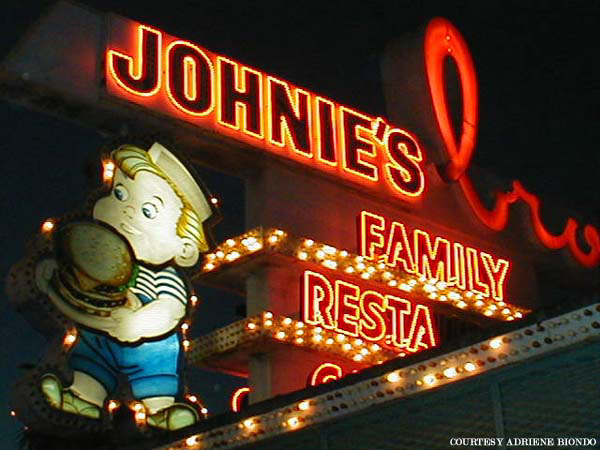
Photo via Wikipedia
During Johnie’s Broiler’s heyday, hot rods and “Kustom Kars” would cruise a route of popular carhop drive-in restaurants. One of the cruise circuits would begin at Grisinger’s (now George’s) Drive-In Diner and would continue on to Holly’s (which was featured in the film Pulp Fiction, before it was demolished) in Hawthorne, California, then to Wich Stand on Slauson and Overhill, before ending in Downey at the Broiler. As many as 3,000 young people would participate in the ritualistic cruises that were held nightly, until the trend faded out in the early 1970s.
In 1986, a gentlemen by the name of Lee McCullough had the idea to request funding for Harvey’s Cruise Nite, which was an idea based on a prior cruise that was created by Burlie Burlile, the contributing editor of Street Rodder magazine and Harvey’s alumni. Harvey’s Cruise Nite was meant as a tribute to the heyday of Jonhie’s Broiler in the late 1950s and 1960s, when more people were cursing and spending their time at drive-in restaurants. DJ Randy Roubal would play oldies and the Wednesday night event would bring in hundreds of hot rods and vintage automobiles that were from the 1930s to the early 1970s. The McCullough Cruise Nite was a success until July 1990, when there was a dispute with the property owner. Although cruises started back up in 1991, it wasn’t until October 1999, when The Broiler was lit up again and a good amount of Downey residents were enjoying evening cruises again.
Johnie’s Broiler ended operations on December 31, 2001. While there were attempts to preserve the historic restaurant and the city of Downey rejected a demolition permit, the new owner, Ardas Yanik, illegally demolished Johnie’s Broiler on January 7, 2007. The police were called, but the restaurant had been completely demolished by the time they arrived. The demolition drew the attention of Downey locals and pretty soon fans, neighbors, classic car clubs, cruisers and preservationists were at the site to rally for Johnie’s and to stop the demolition.
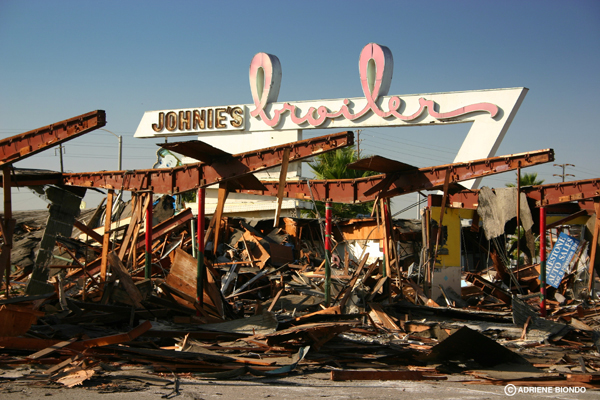
Johnie’s Broiler after the demolition on Sunday, January 7, 2007 Photo via Wikipedia
After the demolition was stopped, the city council of Downey supported the idea to preserve and restore Johnie’s Broiler. In April 2008, Jim Louder, who was the owner of a Bob’s Big Boy restaurant in Torrance, California, rebuilt the restaurant, with the help of Downey’s Redevelopment Agency and the Downey Historical Society. The restaurant was rebuilt as a Bob’s Big Boy Broiler. During construction of Bob’s Big Boy, surviving architectural elements of Johnie’s Broiler were incorporated into the new restaurant.
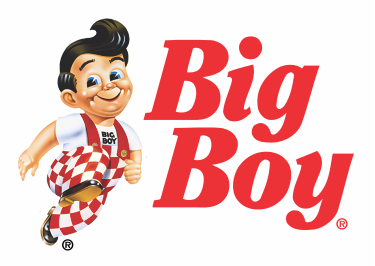
Photo via Wikipedia
Porto’s Bakery & Cafe
In the 1960’s, the Porto family made the difficult decision to leave Manzanillo, Cuba and make Southern California their new home. Leaving Cuba was not only a hard decision to make, it was also bold move that caused the family some serious backlash from the country they had called home for years. Immediately after getting everything in order to move to America, Raul Sr. was fired from his job and was forced to do manual labor during the wait period before he has able to leave the country. Raul’s wife, Rosa, was also fired from her job. Rosa all of a sudden found herself unemployed in Cuba, with three children to take of.
When Rosa and her family were finally cleared to move from Cuba to Southern California, they arrived with nothing more than “the clothes on their backs, Raul Sr.’s strong work ethic, Rosa’s exceptional baking skills, and a dream for a better life.” In California, Rosa began to perfect her own cake recipes and sold them to friends and neighbors, not knowing that she was building a loyal customer foundation in the process. Raul Sr. took a job as a mechanic and delivered Rosa’s cakes in the evenings. While the family found the transition to be tough, they were grateful to be “in a country filled with limitless opportunities and their dream for a better future became more real as the years passed.”
Rosa continued selling cakes to friends, but word of mouth spread and she could no longer keep up with the increased demand. Rosa opened a 300-square foot bakery on Sunset Boulevard, in the Los Angeles neighborhood of Echo Park. Business started off strong with the bakery being incredibly busy during the grand opening. Rosa and Raul were serving approximately 50 customers a day. Raul Sr., who was working two jobs when Porto’s Bakery & Cafe opened, ended up quitting his job at Van Do Kamp’s and worked at the bakery full time with Rosa. Rosa and Raul’s children, Betty, Raul Jr. and Margarita, found a way to balance their school work, so they too could help out at the bakery and learn more about “baking, decorating, food preparation, customer service, and finances.”
Upon graduating from college in the 1980’s, Betty, Raul Jr. and Margarita continued to work at Porto’s, each taking a more specific set of job duties. Raul Jr. managed Porto’s finances and focused on “new product development, production improvements, and quality control” with his friend, Tony Salazar. Margarita worked with Rosa with cake decorating, while Betty worked as manager with her father and worked in the front end of the store, helping customers.
Along with selling Rosa’s Cuban cakes, the Porto family also started selling “French mousses, Italian sweets and international savories.” Porto’s Bakery also saw lines of people “demanding countless quantities of Cheese Rolls™, Refugiados™-guava and cheese strudels, and Porto’s infamous Potato Ball™.” The Porto family new they were going to have to get a bigger place to house the crowds of Californians that adored their baked goods. The Porto family found themselves moving to a 2,000-square foot space in Glendale, CA, that would make it easier for the family to uphold the long lines. 6 years later, they moved again to a 4,000-square foot space. The bakery continued to flourish and more employees were hired to work with the family. The store was always crowded with people that couldn’t get enough of Porto’s “cakes, desserts, and savories.”
In the 1990’s, Porto’s expanded to a 20,000-square foot store. A menu was later added, which featured Cuban sandwiches. Porto’s Bakery & Cafe has been called “one of the most unique family-owned businesses in Southern California.” Rosa Porto is now retired, but “her recipes and her high standards remain, including her motto, ‘quality is the number one ingredient in everything we do.'”
Porto’s Bakery and Cafe serves thousands of hungry customers each day and “employs hundreds of team members throughout Southern California.” Along with Glendale, Porto’s Bakery and Cafe can also be found in Burbank and Downey, California.
Allen Layne Stadium
While Downey has had its fair share of celebrities and professional athletes that have been born in and have lived in the homey Los Angeles suburb, Downey also had a local celebrity who became well known, not as a performer or professional athlete, but as a teacher and principal.
Allen Layne served as a public educator at the Downey Unified School District, as a teacher, coach, Athletic Director and administrator for 35 years. Allen Layne graduated with a Bachelor of Applied Science in Political Science and Government from Utah State University in 1964 and soon took a job as a teacher at Warren High School in Downey, California, before transferring to Downey High School in 1970, where he would serve as the athletic director, vice principal, assistant principal and principal, until his retirement in 2005.
Not only was Allen a no nonsense Principal who did what it took to get the job done, he also excelled as the athletic director, leading the Downey Vikings to a League title in 1971, after beating local high school team Dominguez 25-20. The Vikings celebrated their first league title in almost ten years that year.
Allen mentored new coaches as Downey High’s athletic director and was respected by “veteran coaches in all areas of athletics.” During his tenure in administration at Downey High, Allen kept the campus clean and sharp and earned the respect from not only his staff, but his students as well. In 1994, Allen Layne was promoted to Principal of Downey High School, a title that he held until his retirement in 2005. “Allen Layne’s a man who loved the students and staff at Downey High and made a positive impact at Downey High School throughout his career.” Before Allen Layne retired, Downey High School had plans to create a new football stadium. With the help of Downey High School students rallying being Principal Layne, the school paid tribute to Allen Layne by naming the football stadium after him. Since his retirement, Allen Layne has been able to keep busy by continuing to serve the public. Recently he served on the Orange County Grand Jury for a full year.
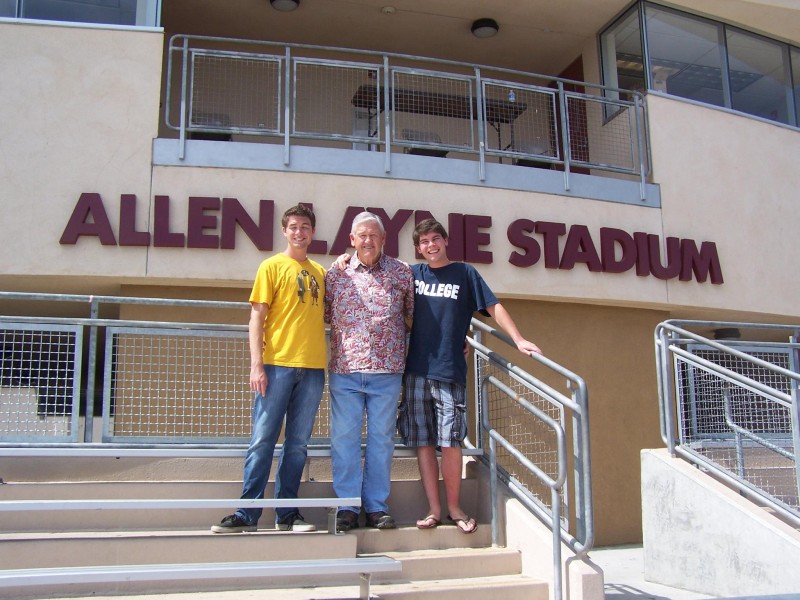
Allen Layne and 2 of his grandsons, in front of the Allen Layne Stadium sign at Downey High School. Photo courtesy of Allen Layne
The next time you find yourself on the I-5 in Southern California, take exit 125 for Downey, so you can get a bite to eat and take a tour of some of the oldest and coolest landmarks the California ‘burbs have to offer.
For more information on Downey, California, check out the official tourism board website.




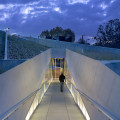
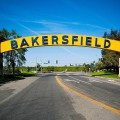
![By Oreos (Own work) [Public domain], via Wikimedia Commons](http://www.travelthruhistory.tv/ThruHistory/wp-content/uploads/2017/02/In-N-Out_Burger_cheeseburger-120x120.jpg)
